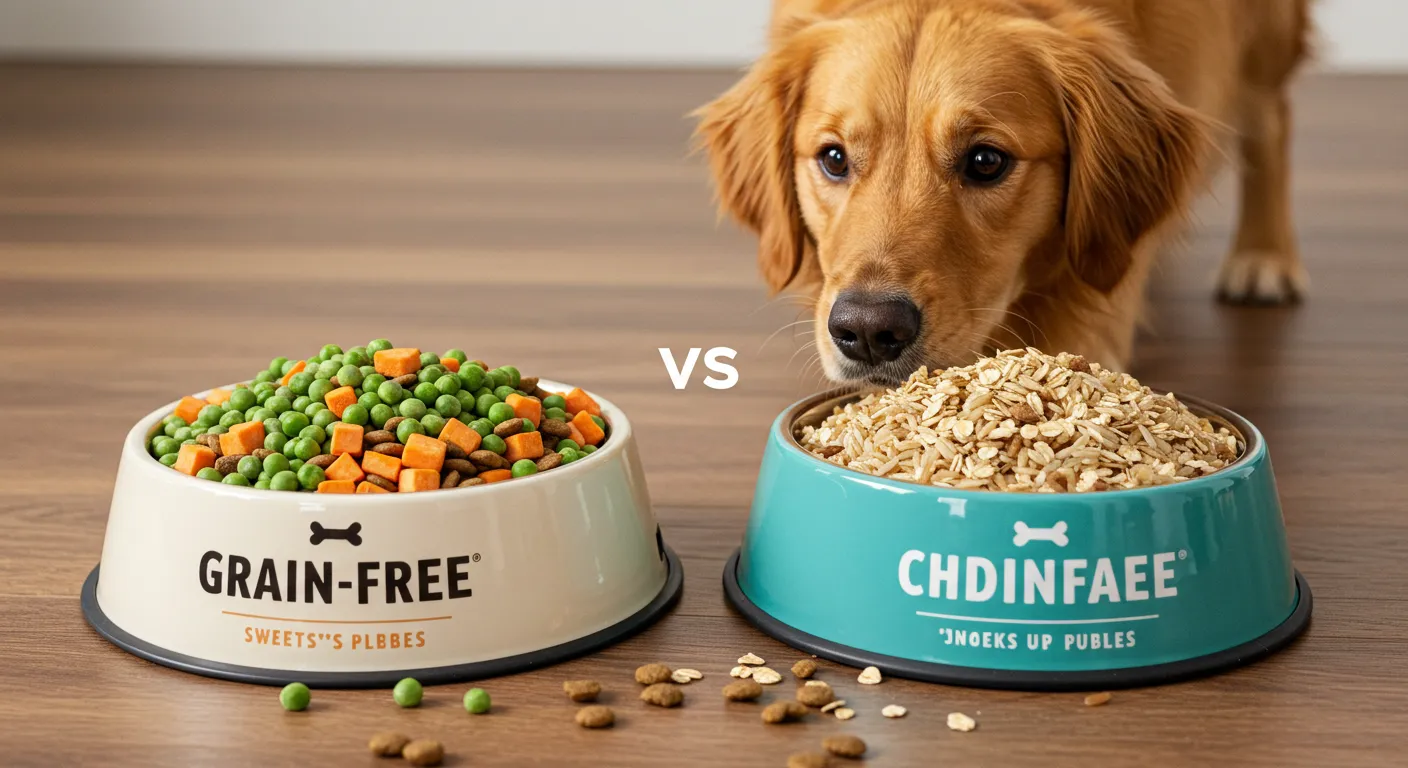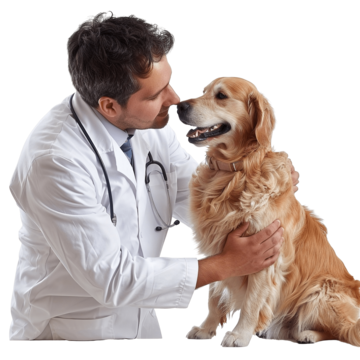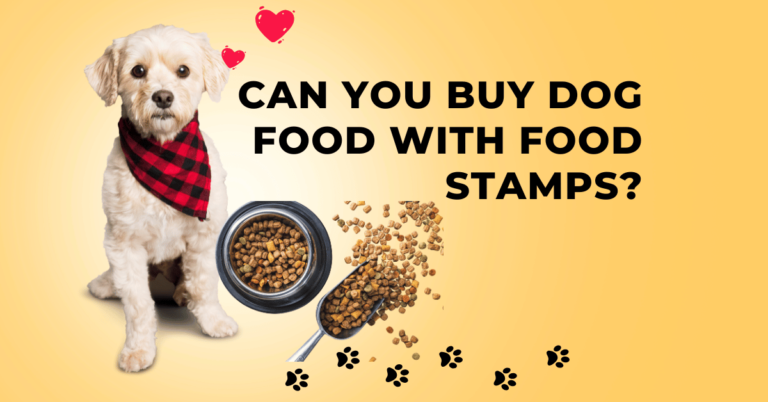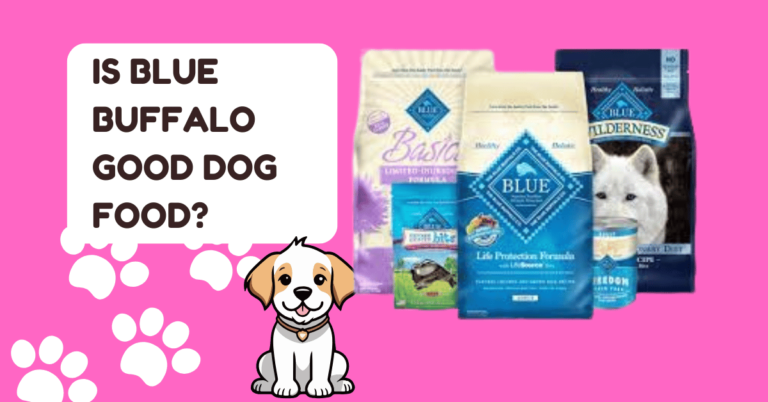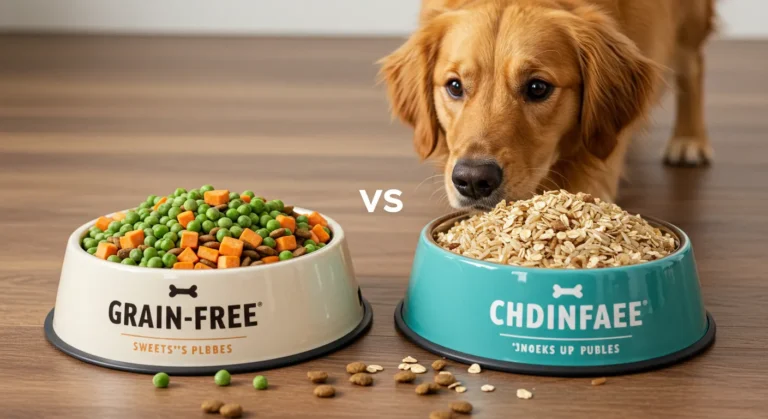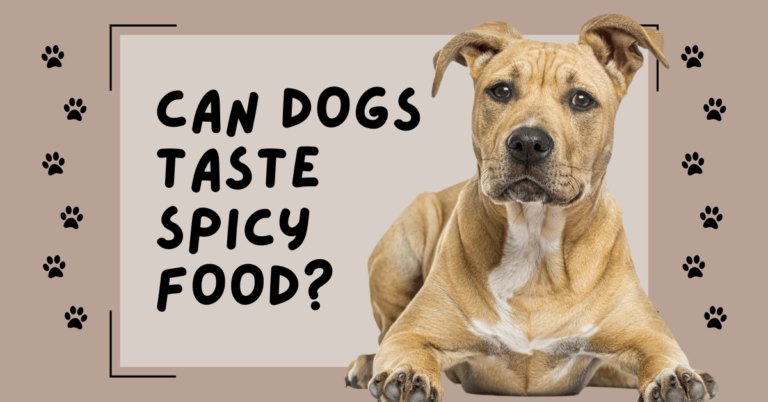Is Grain-Free Dog Food Good for Dogs?
Grain-free dog food can be good for some dogs, but it’s not the best choice for every pet Grain-free dog food has gained popularity among pet owners, but is it truly the best choice for every dog?
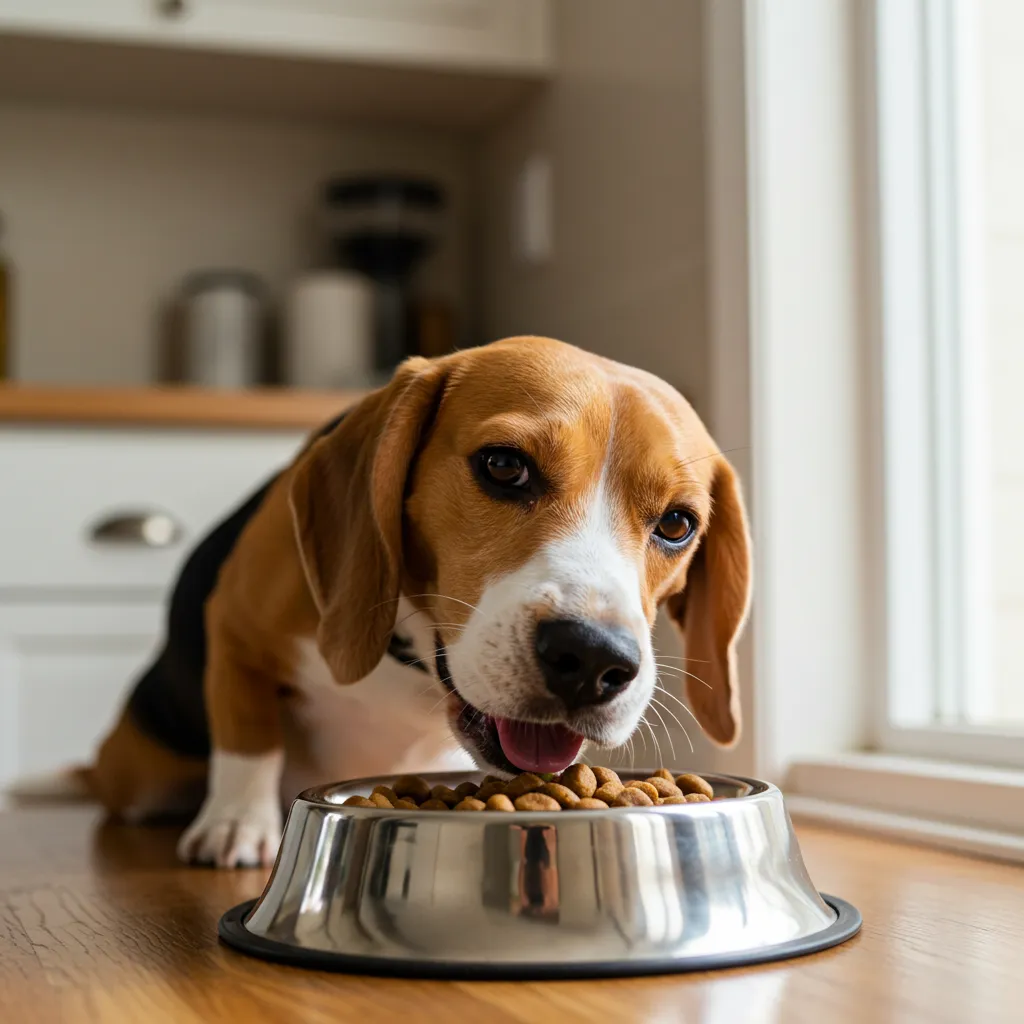
This type of diet removes common grains like wheat, corn, and rice and replaces them with alternatives such as peas, lentils, chickpeas, and sweet potatoes. Many pet owners turn to grain-free diets for their dogs, believing that these foods help with allergies, skin problems, and digestive issues. The idea behind this is that grain-free diets more closely resemble the natural diet of wild dogs, which is high in protein and low in carbohydrates. However, it is essential to understand both the potential benefits and risks before making any dietary changes for your pet.
What is Grain-Free Dog Food?
Grain-free dog food is a type of pet food that does not contain grains like wheat, corn, rice, or barley.
Pet food companies remove grains and replace them with ingredients like peas, lentils, potatoes, chickpeas, and sweet potatoes. These foods still give dogs energy but come from different sources. The goal is to avoid grains that might upset some dogs’ stomachs or cause itchy skin.Many dog owners believe grains cause allergies or digestion problems. They think grain-free dog food helps dogs feel better. But in truth, grain allergies are rare in dogs. Most food allergies come from meat or dairy.

Grain-free food is not always low in carbohydrates. Some grain-free recipes use a lot of starchy vegetables. These vegetables can raise blood sugar and cause weight gain if not managed.In 2018, the FDA began studying a possible link between grain-free dog food and a heart disease called dilated cardiomyopathy (DCM). Some dogs with DCM were eating diets high in peas or lentils. The research is still ongoing.
Dog owners should talk to a vet before choosing a grain-free diet. Not every dog needs to avoid grains, and some dogs may be healthier with them.
Why Do Pet Owners Choose Grain-Free Diets?
Many pet owners choose grain-free diets because they believe these diets help dogs stay healthier.
Some owners think grains cause food allergies in dogs. They switch to grain-free food to avoid itching, stomach issues, or skin problems. However, most dog allergies come from proteins like chicken or beef, not grains.Other people believe grain-free diets help with weight control. They think fewer grains mean fewer calories. But many grain-free foods use high-carb vegetables like potatoes or lentils, which can still lead to weight gain.
Some owners prefer grain-free diets because they want to follow an “ancestral” or “natural” way of feeding dogs. They believe dogs should eat like wolves. But wolves and domestic dogs have different nutrition needs.

Marketing also plays a big role. Many dog food brands advertise grain as a cheap filler. This makes grain-free dog food sound more premium. In reality, grains like rice or oats can provide healthy nutrients.
Confusion around food labels can lead to myths. Not all grains are harmful, and not all grain-free foods are better.Pet owners should ask a vet before changing their dog’s diet to make sure it’s the right choice for their pet.
Potential Risks of Grain-Free Diets
Grain-free diets can carry health risks for some dogs. One major concern is a heart disease called Dilated Cardiomyopathy (DCM).The FDA began investigating DCM cases in 2018. Their reports showed that over 90% of affected dogs were eating grain-free diets. Many of these foods included peas, lentils, or other legumes as main ingredients.
Legumes may block the absorption of taurine, an amino acid that supports heart health. Dogs with low taurine levels may develop heart problems over time. Some breeds, like Golden Retrievers and Dobermans, are more sensitive to taurine deficiency.
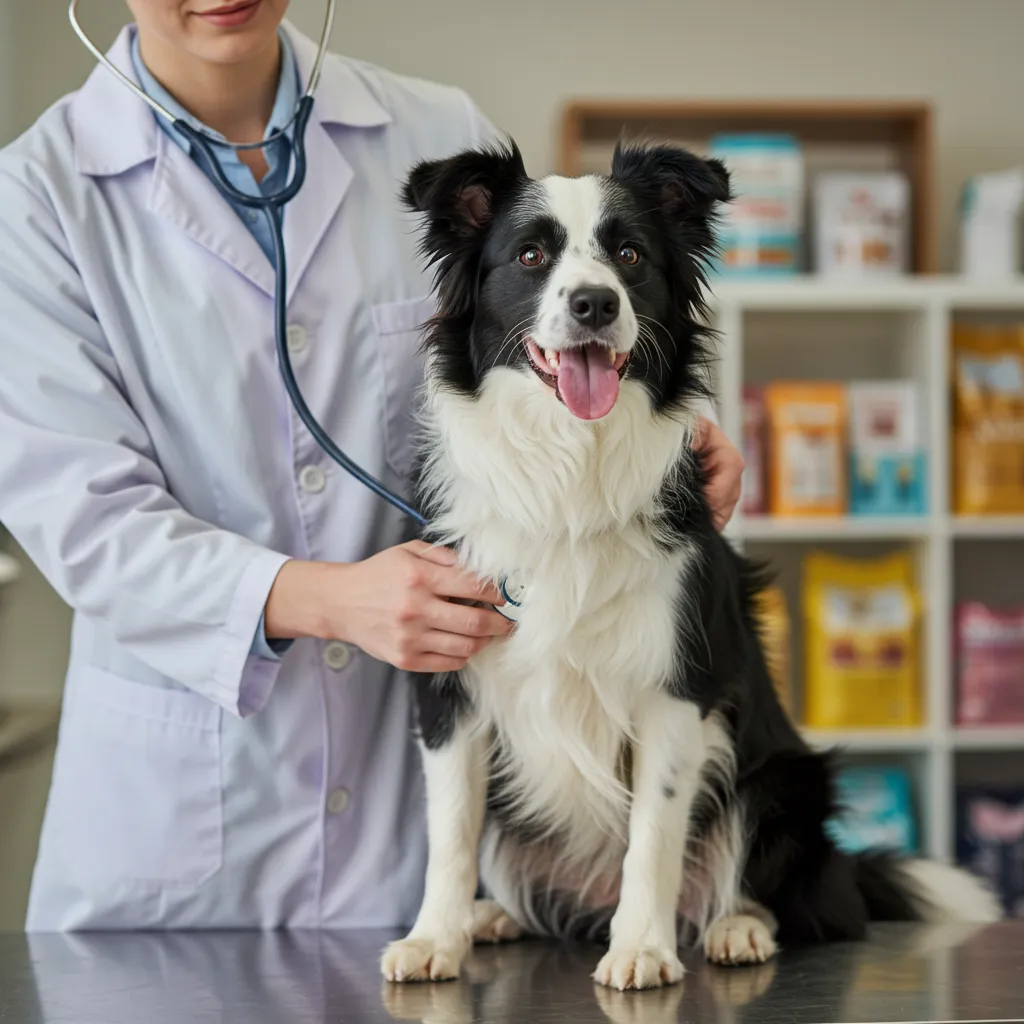
Another risk is nutrient imbalance. Grain-free diets can lack fiber, B vitamins, iron, and magnesium. These nutrients usually come from whole grains. Some grain-free dog food formulas are also high in calories. The use of starchy vegetables can increase carbohydrates and fat, leading to weight gain or obesity.
Many pet owners choose grain-free diets for health, but the wrong recipe may harm a dog’s long-term well-being. Veterinarians recommend choosing diets backed by science and regular health checks. If you feed grain-free dog food, watch for signs of fatigue, breathing issues, or weight changes.
When Might Grain-Free Be Necessary?
Grain-free diets are not required for most dogs but may be necessary in specific cases. Here are a few situations when grain-free food may be recommended:
- Grain Allergies:
Though rare, some dogs have true grain allergies, which can cause symptoms such as vomiting, diarrhea, and skin issues. For example, some breeds, like Irish Setters, may develop gluten intolerance. - Veterinary-Prescribed Diets:
In cases where a dog is diagnosed with food sensitivities or allergies, a veterinarian may prescribe a grain-free diet as part of a treatment plan. This is often determined through an elimination diet, where the dog is fed a limited diet to identify the allergen. - Health Conditions:
For dogs with certain health conditions, a grain-free diet might be recommended by the vet. However, this should always be based on professional advice.
For insights on what to do if your dog has food sensitivities, read our guide on homemade food for dogs with skin allergies.
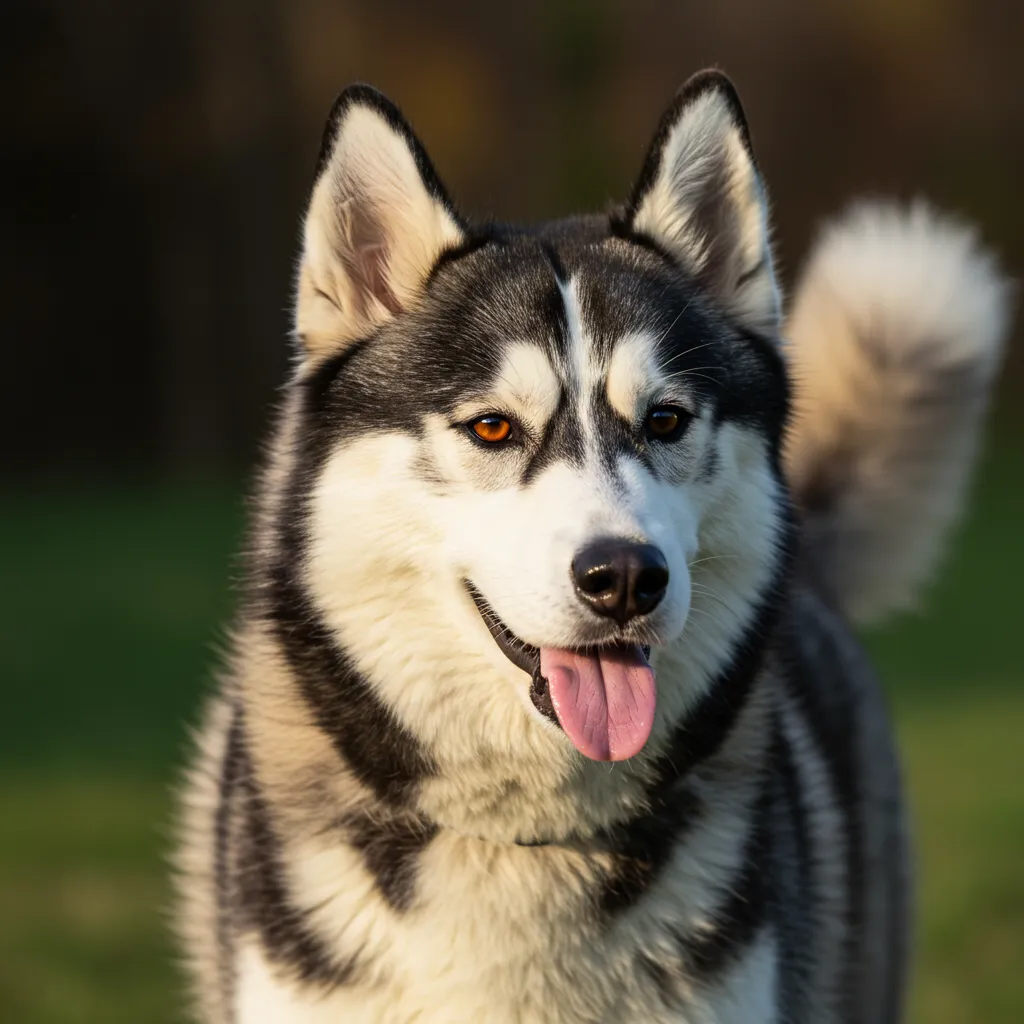
How to Choose the Right Dog Food
When selecting dog food, it is essential to consider your dog’s unique needs. Here are some tips:
- Look for dog food that meets AAFCO (Association of American Feed Control Officials) standards. This ensures that the food is “complete and balanced” for your dog’s life stage.
- Always consult with your veterinarian or a pet nutritionist to determine what’s best for your dog. Factors like age, breed, weight, and health history all play a role in selecting the appropriate diet.
- If grain-free food isn’t the best option, consider limited-ingredient or hydrolyzed protein diets, which are designed to manage allergies and sensitivities.
For more information on choosing the right food, explore our article on is Blue Buffalo good dog food.
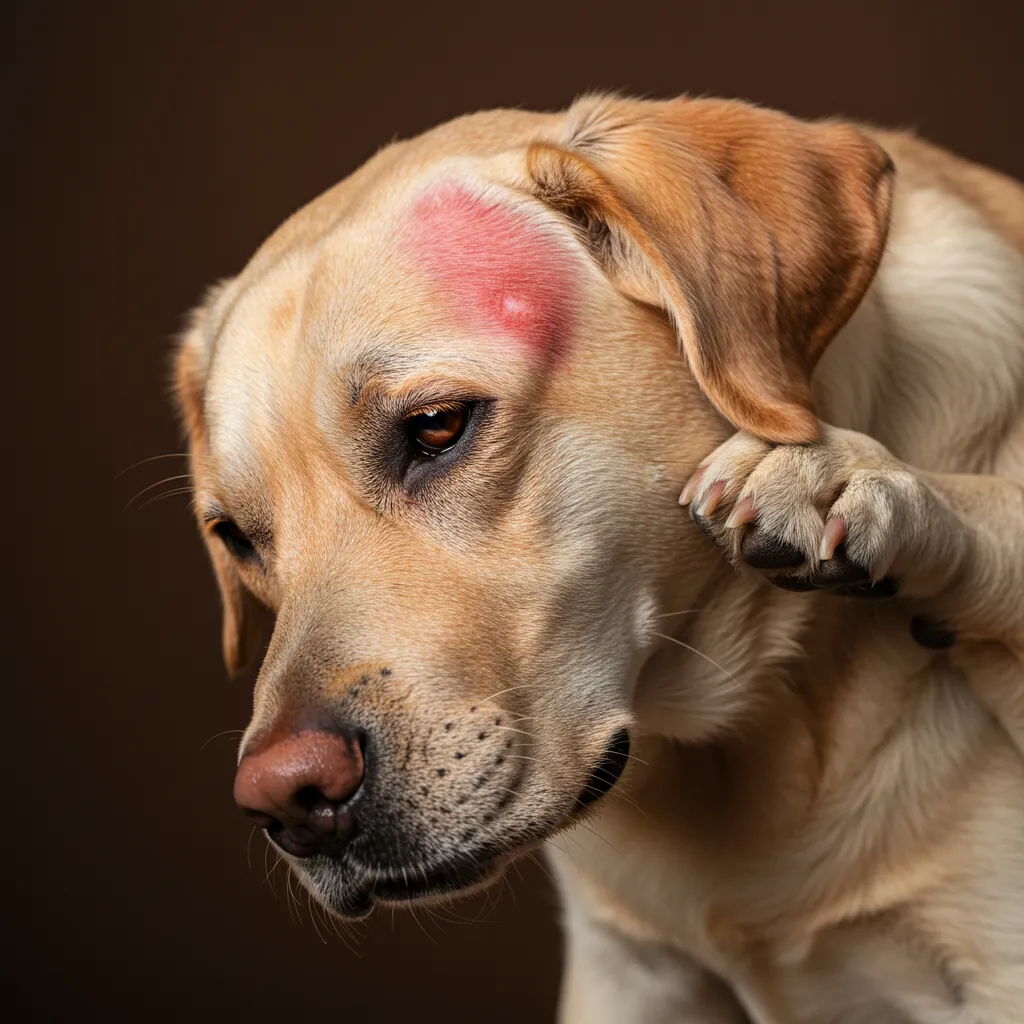
Signs Your Dog Might Need a Diet Change
Sometimes, a dog’s body gives clues when their food is not working. Recognizing these signs early can prevent bigger health problems.
Itching is a common symptom of food allergies. Dogs may scratch their ears, bite their paws, or rub their face on the floor. Red skin, hot spots, or repeated ear infections may also appear.
Gastrointestinal issues can signal a diet problem. Look for diarrhea, frequent vomiting, or signs of bloating after meals. Some dogs may lose weight or refuse to eat.
A dull or flaky coat may point to missing nutrients, especially if the dog once had a shiny, healthy coat. Omega-3 fatty acids, vitamins, and protein are key for skin and coat health.
In more serious cases, signs of heart disease may show up if a dog is not getting enough taurine. This includes lethargy, coughing, or trouble breathing. These signs can be linked to Dilated Cardiomyopathy (DCM), which has been studied in relation to certain diets.
Pet owners should track any changes in behavior or health. Quick action and a vet visit can make a big difference in a dog’s long-term health.
Grain-Free Dog Food – Frequently Asked Questions
Do dogs need grains in their diet?
Yes, unless a vet confirms an allergy or sensitivity. Grains offer fiber, vitamins, and steady energy. Whole grains like brown rice and oats also support healthy digestion.
Is grain-free dog food bad for all dogs?
No, but it’s not always necessary. While some dogs benefit from grain-free diets, others may face risks if the food is low in taurine or high in starch. Feeding grain-free dog food without a medical reason may do more harm than good.
What brands were flagged by the FDA?
In the FDA’s investigation into DCM, several popular brands appeared in multiple reports. These include Acana, Zignature, Taste of the Wild, 4health, Earthborn Holistic, Blue Buffalo, and Merrick. The findings did not confirm guilt but showed patterns worth deeper study.
Can I feed my dog grain-free food safely?
Yes, if it is done with care. Choose formulas that meet AAFCO standards and avoid recipes with too many legumes. Monitor your dog’s weight, energy, and heart health regularly. A vet check-up every 6 to 12 months helps catch problems early.
What’s the best way to switch my dog’s diet?
Start slowly. Mix the new food with the old one in small amounts over 5 to 7 days. Increase the portion of new food each day. This reduces the risk of digestive upset.
How do I know if my dog needs a special diet?
Only a vet can confirm this. If your dog has skin issues, frequent stomach problems, or heart symptoms, visit the clinic. The vet may suggest blood tests, an elimination diet, or a special formula.

